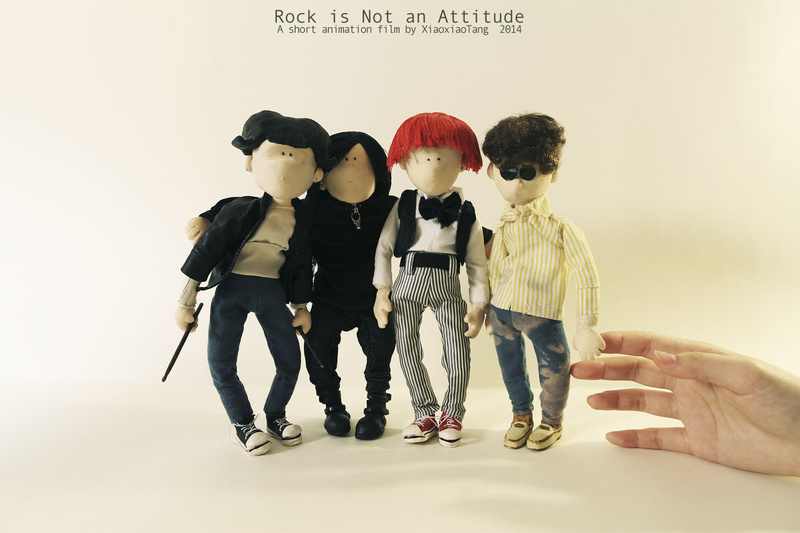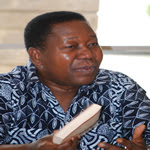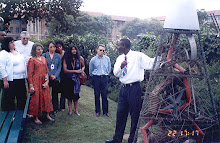ROFFEKE: You are the vice-president/curator of the Rockabilly Hall of Fame Museum and the owner of the Louisiana Hayride Archives. Your screenplay "Simon Says" features lyrics from 25 Paul Simon songs. Why Paul Simon's lyrics and not, say, Elvis' lyrics?
JOEY KENT: My father was the producer of the Louisiana Hayride for many years, the place where Elvis and others got their start, and I chronicled that rich history in a book called “Cradle of the Stars: KWKH & the Louisiana Hayride” just a few years ago, so this script was a welcome departure from all things of that world. The idea came to me while listening to “Me and Julio Down by the Schoolyard” one day as my mind began to wonder what exactly had been witnessed that day. Similarly, I started my first novel of historical fiction not long ago entitled “Last Train To Clarkesville” after hearing the Monkees song of the same name and wondering what the “one more night together” Mickey sings about might be like.
ROFFEKE: Paul Simon has written many songs. How did you narrow it down to 25? What was your criteria for picking the songs?
JOEY KENT: Once I committed to the idea of exploring what “me and Julio” were doing down by the schoolyard, I began to hear other Paul Simon lyrics in my head and started weaving together the story of retired boxer Al Simon. I then read over many of Paul’s lyrics and sourced the parts I needed to tell the tale.
ROFFEKE: I am no lawyer but one of the common things screenwriters are advised to do is to avoid writing brand names and songs/song lyrics in their screenplays. How does your screenplay avoid any potential legal/production nightmares regarding the song lyrics?
JOEY KENT: I am a writer, so I write first and ask questions later!
ROFFEKE: *laughs*
JOEY KENT: Well, my complete answer is that I write what's in my heart and then work out the details if and when we get to production (or let the lawyers do it!). I actually reached out to Paul Simon's camp but didn't get through the gauntlet. Did, however, shoot the film several years ago, at least the interview part, but felt I needed to do B-roll inserts of Rosie, the school, and other elements, and missed the deadline for the Film Prize contest I had my eye on, so I shelved it. Al Simon was played by the brilliant Shreveport actor Richard Folmer, and my wife (now ex) played Betty Robinson. Maybe in a few months I'll shoot the B-roll and edit it and release it. Richard died a few months back, and this would be a fitting tribute.
ROFFEKE: You've been active in the film and TV industry since 1992 but it was in 2010 that you began writing movie scripts. What would you say were your early mistakes and what screenwriting lessons have you learned since then?
JOEY KENT: My earliest mistakes revolved around thinking I understood the format of screenwriting. I remember realizing on page 130 of my first script effort that I was only about a third of the way through the story and, in those days before short series on streaming networks, I was mortified that I was writing an epic and that forced me to study the genre. A friend pointed out that my script contained a lot of description and a fair amount of camera directions and he gently explained that a screenplay didn’t have a lot of either. As an example, he pointed out the infamous scene in “Gone With The Wind” in which Rhett and Scarlet are fleeing Atlanta as the Union Army is burning it to the ground. This action amounts to more than eight minutes on screen but in the script, it simply says “Atlanta burns.” That simple two word sentence became the cornerstone for my understanding of the art of screenwriting. I realized in that moment that screenplays had to be part story and part owner’s manual, with just enough description to engage the reader but not so much that it might step on the toes of potential directors or other production professionals trying to envision their own work in the project. Where I might be tempted to take a paragraph to describe an ancient couch for a book reader, in the script it became simply “a well-worn couch that has seen better days”. Gone, too, were words like “we pan up and see the horror in his eyes”. That is the job of the director and cinematographer. Replaced instead with “his eyes darted around in terror”. To that end, I endorse a short book written by a protegé of mine entitled "Atlanta Burns" by Ima Judge. He took the title from my talk on the subject and offers up many great tips for screenwriting. It is available from Amazon by searching the title, and I can't recommend it enough.
ROFFEKE: You have been awarded 45 "Best Screenplay" awards. What is your secret???!!!
JOEY KENT: Once I began to master the art of brevity, the main thing I focused on was achieving the best possible start to the screenplay. They say you have about ten minutes on screen or about ten pages of a feature script (less for a short) to engage the audience’s interest, so I start there. I focus on hooking the reader in the first 10-15 pages and I don’t proceed from that point until I am completely satisfied. If you hook the reader, then you will hook the viewing audience, and they will stick around to see how it ends as long as you tell a good story and don’t go on for some ridiculous page count (or unless you are writing with an installment series in mind). I take my time but if I get in the zone, I have been known to write a feature screenplay in as little as 9 days, but I seem to comfortably average around 3 weeks for the process. Part of winning so many awards is knowing where to place your project on the festival circuit. For instance, a faith-based festival isn’t likely to award your bloody horror script, so do your homework. I began entering scripts into festivals with only one goal in mind: to show my ideas have merit beyond my own say so. It is one thing to try and convince potential investors or producers or actors or directors that your work has merit. It is quite another to offer that many people with no vested interest in my financial future share my opinion. So, make sure you get your project off to a good start with an opening that hooks your reader. Most of the time, any professional that agrees to read your script is not going to continue past page 10 without being captivated, and the same is true of your friends and colleagues. Most will indulge you for ten pages, at least the first time or two! Hook them, then tell your story without wasting precious words on description and camera moves, and keep your desired page count in mind. Finally, I like brief titles, if at all possible – again, trying to capture the attention of someone seeing only the poster and trying to decide if they want to see the movie. I research titles on IMDb to see if one I like has been used before and, if so, then I try to think of one that hasn’t. If you can avoid confusion from the start and set your script apart with a unique title, all the better.
ROFFEKE: In 2012, you produced a civil rights documentary called "Beyond Galilee". You say in a 2012 KSLA 12 News interview: "We were afraid that this might ignite old feelings and create problems rather than solve problems." Ten years later, what reason would you give people to watch Beyond Galilee?
JOEY KENT: “Beyond Galilee” tells the story of the civil rights struggle in the city of Shreveport, Louisiana. I was born in that city and recognized there were many rumors and stories about Martin Luther King Jr.’s visits to the city and the resulting empowerment it gave people who heard him speak. I am an historian of the city and in the late 1990s was brought a tape of King speaking at the Galilee Baptist Church in 1958. I owned a recording studio at the time and was charged with transferring this historic tape to digital format. It turned out to be King’s earliest full length recorded speech. It predates his famous “I Have A Dream” speech by five years, and you can hear the elements of that speech in his Galilee address. We took that recording and made it the bed for the documentary, listening to King call the congregation to arms, then cutting away to interviews of some of those participants as they recalled how history unfolded, point by point. Unlike his more famous speech, in the Galilee speech you can hear the audience getting excited, exclaiming “Watch him now!” as King gets fired up. Being able to share not only that inspiring speech but watch and hear the results is truly inspiring. Anyone facing prejudice of any kind, especially racial prejudice, will find solace in the struggle portrayed in “Beyond Galilee”. At the 2012 premier in Shreveport, we instantly saw the beginning of the healing process as people were finally able to separate fact from legend and realize the implications of what the local heroes had gone on to accomplish. On the festival circuit, “Beyond Galilee” has won 36 awards from 18 countries including 12 Best Documentary awards. Unlikely wins from places like Russia perhaps offer the best testament to the universality of the subject matter, its relevance, and a clear cut reason why it should be viewed ten years after its creation. Director T.D. Antoine grew up in Shreveport not far from Galilee during those trying times, and he did a masterful job of putting together the documentary in linear fashion (cutting from interview to interview without benefit of a narrator) which is no easy task. T.D. and I look forward to sharing other content with the world as 2023 unfolds.
ROFFEKE: You are an archivist and a historian. What are your thoughts on artificial intelligence, virtual reality, augmented reality, the metaverse and the future of filmmaking?
JOEY KENT: I have embraced areas of technology to help tell documentary stories by using Photoshop tools to bring life to static images. In that way, they help illustrate the story when supplemental images are few and far between. I am concerned about advancing technology being used to create “new” roles for deceased stars like Elvis or Marilyn Monroe. This may be viewed the same way people look at colorizing old black and white photos. When used as a spice, sprinkled here and there, these tricks can help enhance a project, but if you are casting an artificial image of Marilyn Monroe in a feature, then you are once more overlooking the thousands and thousands of great actors out there looking for work. As an independent filmmaker, I recognize the value a quality actor can bring to a project, and also the Hollywood tendency to group and label stars, casting them again and again in similar roles rather than take a chance on a former great or a newcomer. The only rule I have in casting independent films is don’t pair an “A or B list” actor with some “F list” guy who does local theater on the side because people will end up focusing on the vast differences in their acting styles and your movie will have that “cheap” look about it. Cast people with similar levels of acting abilities, light your sets competently and capture good sound. Nail those things down and the hard part will be over, at least until you get to editing! I may very well end up doing some sort of hologram show of Elvis or Johnny Cash at our forthcoming Rockabilly Hall of Fame Museum, taking advantage of those emerging technologies to supplement the original recordings that I own, similar to the way the King speech was supplemented by the stories of his congregation. In that way, I appreciate the future contributions of technology but, as someone born in the era of celluloid and raised with Ed Sullivan, Johnny Carson, Dick Cavett, and a host of other variety shows, I am a purist for film movies shown in a big theater every time. Thank you so much for the great questions and for making “Simon Says” a selection for competition at the Rock ‘N’ Roll Film Festival Kenya.
"Simon Says" Synopsis: "Lyrics from twenty-five Paul Simon songs are carefully crafted to give life to a former junior Middleweight as he recalls his short lived boxing career in a candid interview with a columnist."



























































































































































































